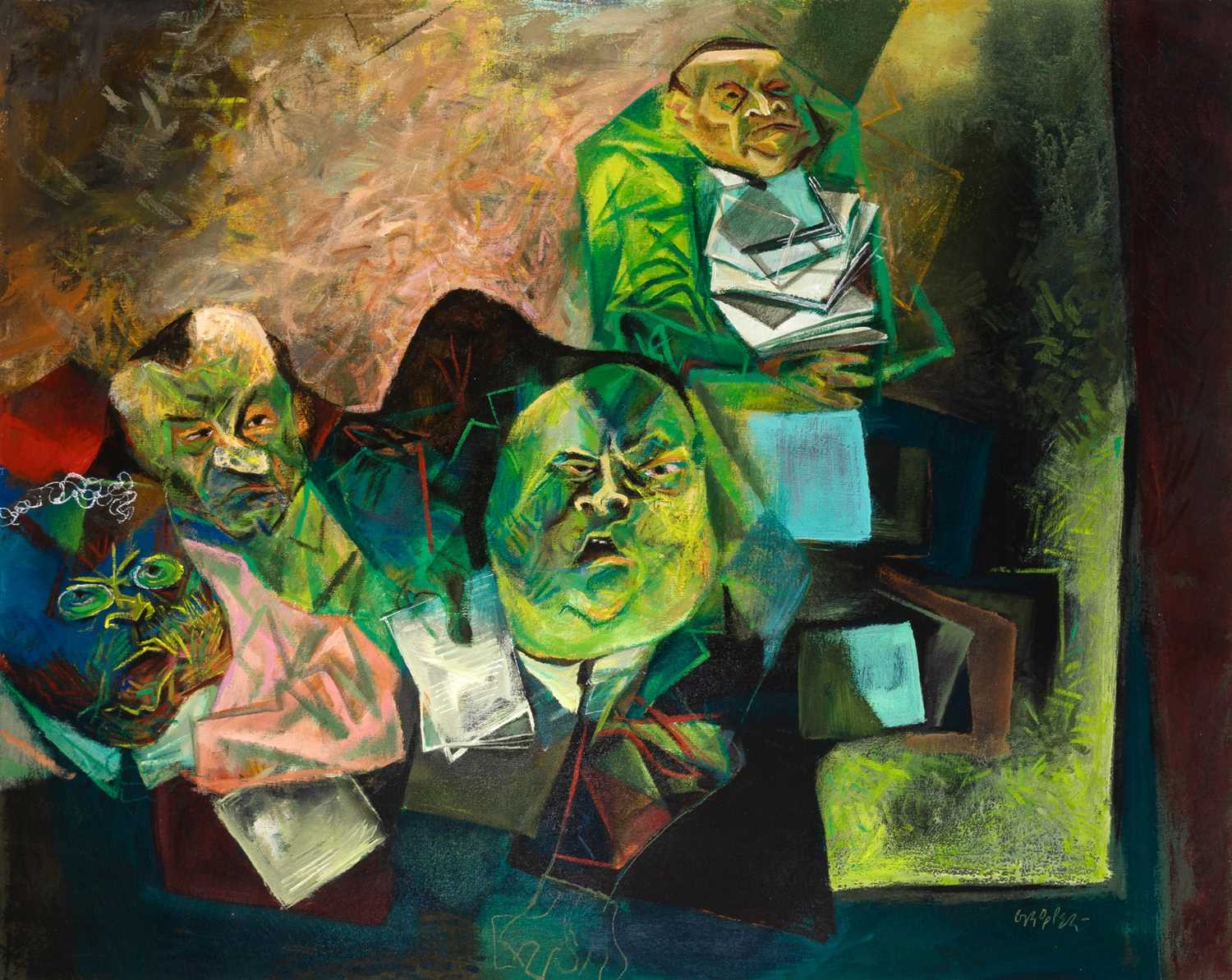
William Gropper
American, 1897-1977
William Gropper was born into a Jewish immigrant family on New York City’s Lower East Side, the eldest of six children. Raised amid the economic hardships of the garment district, Gropper developed an early awareness of labor injustice and social inequity. His early environment, steeped in the realities of working-class struggle, instilled in him a profound empathy that never left his work.
As a young man, Gropper studied at the National Academy of Design and the New York School of Fine and Applied Art, working under influential realist painters such as Robert Henri and George Bellows. He began his career contributing biting cartoons and illustrations to progressive and leftist publications. Over time, his practice expanded to include painting, lithography, and large-scale mural commissions. Whether addressing themes of labor, poverty, or patriotism, his work remained rooted in a commitment to social justice and the lived experience of ordinary Americans.
Gropper’s wide-ranging output encompassed everything from political satire to New Deal era public murals and later, expressionistic canvases that captured the psychological toll of American life. Though blacklisted during the McCarthy era for his political affiliations, he never compromised his vision. Today, Gropper is recognized as a major figure in American social realism. His legacy endures not only through his art, but also through his steadfast belief that creative expression can be a powerful force for justice and collective truth.